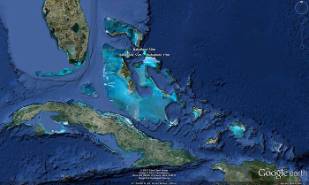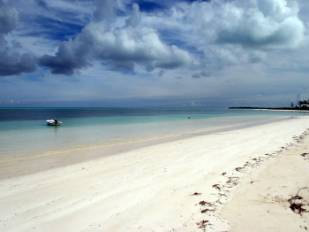For the next two weeks I am fortunate to be joining a Museum field trip to the Isles of Scilly, 30 miles off the southwest corner of Cornwall. Alongside my Nature Live colleague Ana Rita Rodrigues and Media Technician Tony Vinhas, we will be reporting back from the trip in daily posts and organizing live-video-links to for 4-days-worth of Nature Live events in the Museum's Attenborough Studio.
If you want to experience the project live and direct come to the Attenborough Studio for one of the following events, and keep checking the blog for updates:
- Sun 26 May: Isles of Scilly 2013, A Shell of a Good Time
12.30 and 14.30 - Meet some of the mollusc curators taking part in the trip. - Mon 27 May: Isles of Scilly 2013, Fishy Business
12.30 and 14.30 - Find out about the fish living in the waters around the Isles of Scilly. - Tue 28 May: Isles of Scilly 2013, Lichen? You’ll Love Em’!
12.30 and 14.30 - Discover some of the wonderful lichens found on the Isles and what they tell us about the local environment. - Wed 29 May: Isles of Scilly 2013 An Area of Outstanding Natural Beauty
14.30 only - Explore the extraordinary plant life of the Isles.
All the events are are free to attend (as is entry to the Museum) and each will last 30 mins. You’ll be able to see and talk live to scientists in the field, see specimens collected during the trip and meet a Museum scientist in the studio.
The team in the Isles of Scilly comprises scientists studying topics as varied as flowering plants, fishes, lichens and flies! I will introduce the different scientists and their areas of specialism over the coming days but for now - to set the scene - here are some photos the trip's leader, Mark Spencer, took last time he visited the islands.
They are clearly exceptionally beautiful, a fact that makes the involvement of the National Association for Areas of Outstanding Natural Beauty even more pertinent and this collaborative project will strive to further our understanding of these incredible islands.
I am so excited to be visiting the islands and to be accompanying the team. Spending any time with our scientists is an education in the natural world and two weeks exploring a stunning part of the world with such experts is a very exiting prospect. On a more personal note, I am also very pleased to be able to relive one of my Dad’s dinner time stories. Many a family meal have been the forum for a retelling of the old man’s ‘best ever, EVER dream. In his own words ...
‘At some point it the 70s, or was it the 80s(?), I was in Bryher in the Isles of Scilly. Half way through a walk around the island I lay down on the beach for a nap. During the dream that followed I became a professional tennis player and managed, against all odds, to win Wimbledon. Having raised the trophy and flushed with pride, I woke up and finished my walk.'
Some say he [my dad] never fully woke up from that nap on the Isles of Scilly ...
See you again next week when we will all have arrived!
Tom



.jpg)
.jpg)

